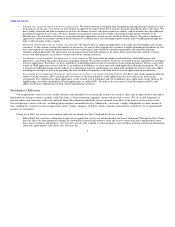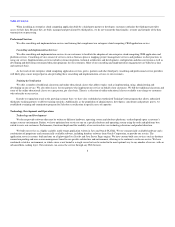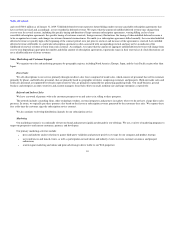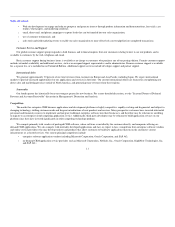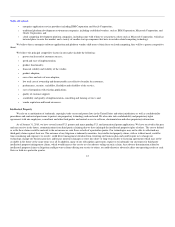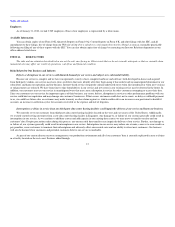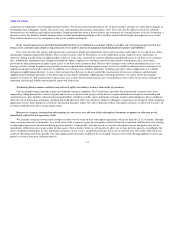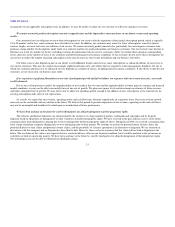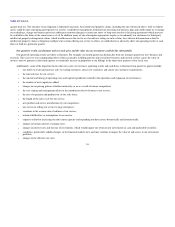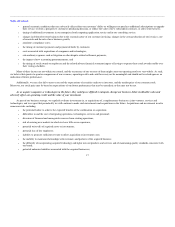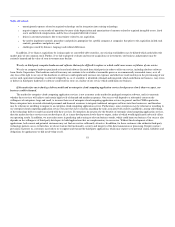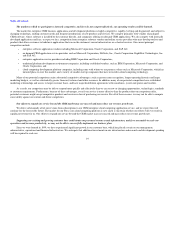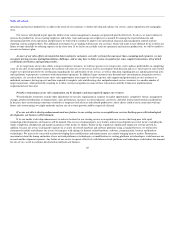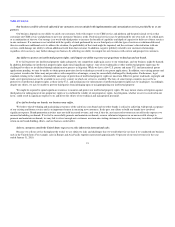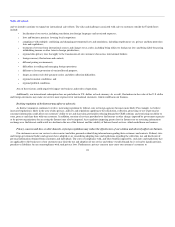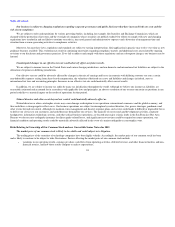Salesforce.com 2009 Annual Report Download - page 18
Download and view the complete annual report
Please find page 18 of the 2009 Salesforce.com annual report below. You can navigate through the pages in the report by either clicking on the pages listed below, or by using the keyword search tool below to find specific information within the annual report.
Table of Contents
recognized over the applicable subscription term. In addition, we may be unable to adjust our cost structure to reflect the changes in revenues.
We cannot accurately predict subscription renewal or upgrade rates and the impact these rates may have on our future revenue and operating
results.
Our customers have no obligation to renew their subscriptions for our service after the expiration of their initial subscription period, which is typically
12 to 24 months, and in fact, some customers have elected not to renew. In addition, our customers may renew for fewer subscriptions, renew for shorter
contract lengths, or renew for lower cost editions of our service. We cannot accurately predict renewal rates, particularly for our enterprise customers who
purchase a large number of subscriptions under multi-year contracts and for our small and medium size business customers. Our renewal rates may decline or
fluctuate as a result of a number of factors, including customer dissatisfaction with our service, customers' ability to continue their operations and spending
levels, decreases in the number of users at our customers and deteriorating general economic conditions. If our customers do not renew their subscriptions for
our service or reduce the number of paying subscriptions at the time of renewal, our revenue will decline and our business will suffer.
Our future success also depends in part on our ability to sell additional features and services, more subscriptions or enhanced editions of our service to
our current customers. This may also require increasingly sophisticated and costly sales efforts that are targeted at senior management. Similarly, the rate at
which our customers purchase new or enhanced services depends on a number of factors, including general economic conditions. If our efforts to upsell to our
customers are not successful, our business may suffer.
If we experience significant fluctuations in our rate of anticipated growth and fail to balance our expenses with our revenue forecasts, our results
could be harmed.
Due to our evolving business model, the unpredictability of new markets that we enter and the unpredictability of future general economic and financial
market conditions, we may not be able to accurately forecast our rate of growth. We plan our expense levels and investment on estimates of future revenue
and future anticipated rate of growth. We may not be able to adjust our spending quickly enough if the addition of new subscriptions or the renewal rate for
existing subscriptions falls short of our expectations.
As a result, we expect that our revenues, operating results and cash flows may fluctuate significantly on a quarterly basis. Our recent revenue growth
rates may not be sustainable and may decline in the future. We believe that period-to-period comparisons of our revenues, operating results and cash flows
may not be meaningful and should not be relied upon as an indication of future performance.
We have been and may in the future be sued by third parties for alleged infringement of their proprietary rights.
The software and Internet industries are characterized by the existence of a large number of patents, trademarks and copyrights and by frequent
litigation based on allegations of infringement or other violations of intellectual property rights. We have received in the past and may receive in the future
communications from third parties claiming that we have infringed the intellectual property rights of others. During fiscal 2009, we received a communication
from a large technology company alleging that we were infringing some of their patents. We continue to analyze the potential merits of their claims, the
potential defenses to such claims and potential counter claims, and the possibility of a license agreement as an alternative to litigation. We are currently in
discussions with this company and no litigation has been filed to date. However, there can be no assurance that this claim will not lead to litigation in the
future. The resolution of this claim is not expected to have a material adverse effect on our financial condition, but it could be material to the net income or
cash flows or both of a particular quarter. We have been, and may in the future be, sued by third parties for alleged infringement of their proprietary rights.
Our technologies may not be able to withstand any third-party claims
15


